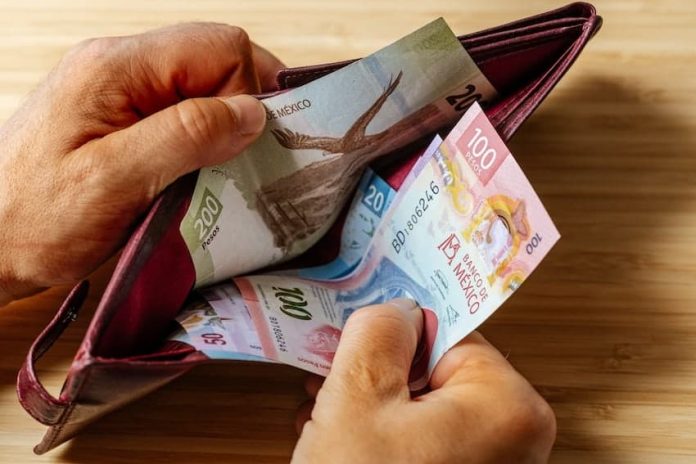The Mexican peso is on the wane again after recovering from a dip earlier in the month.
One US dollar was trading at 17.47 pesos at 11 a.m. Mexico City time, according to data from Bloomberg. The greenback reached a high of 17.56 pesos in overnight trading.
The peso has lost about 40 centavos against the dollar over the past week after closing at 17.08 to the greenback last Tuesday. The dollar traded at a three-month high of 17.6 pesos in early September, but Mexico’s currency subsequently rallied.
A range of factors have contributed to the peso’s most recent dip, including a general strengthening of the dollar and decreased appetite for risk.
The U.S. dollar index, which measures the value of the greenback relative to a basket of six other currencies, reached its highest level of the year on Tuesday morning.
Some analysts say that the weakening of the peso on Monday and Tuesday is partially due to Minneapolis Federal Reserve Bank President Neel Kashkari’s statement that the Fed probably needs to raise interest rates above the current 5.25-5.5% level to bring inflation down to 2% in the United States.

“If the [U.S.] economy is fundamentally much stronger than we realized, on the margin, that would tell me rates probably have to go a little bit higher, and then be held higher for longer to cool things off,” Kashkari said at an event on Monday.
The Mexican financial group Ve por Más said in a note that it was “probable” that the appetite for risk assets, such as the Mexican peso, would be “limited” due to “the restrictive tone” of “some members of the Fed” as well as “the risk of a United States government shutdown.”
The Fed’s next monetary policy decision is due in late October, while board members of Mexico’s central bank will meet this Thursday to discuss monetary policy.
The significant difference between the Bank of Mexico’s benchmark rate – currently set at a record high of 11.25% – and that of the Fed is cited as one factor that has boosted the peso in 2023 after the year started with a USD:MXN exchange rate of about 19.5.

Another factor that has recently affected appetite for risk assets is the real estate crisis in China.
Gabriela Siller, director of economic analysis at Banco Base, said on X (formerly Twitter) that the expectation that interest rates will remain high in the U.S. for a “prolonged period” as well as “aversion to risk” due to the situation in China were both weighing on the peso.
In the same post, she also said that the auto sector strike in the U.S. is “beginning to generate concern.”
The financial news website Finbold reported that rising U.S. Treasury bond yields is also a factor in the recent strengthening of the US dollar against the peso. Finbold noted that if Mexico’s inflation rate continues to decelerate – the headline rate fell to 4.44% in the first half of September – the Bank of Mexico “may have to adjust the monetary policy, which could potentially weigh on” the peso.
However, a cut to the 11.25% rate before the central bank’s December monetary policy meeting is considered unlikely. The bank itself has said on repeated occasions that maintaining the record high rate for an “extended period” is necessary in order to bring inflation down to its 3% target.
While the peso is currently well off its 2023 – and almost eight-year – high of 16.62 to the dollar – the performance of the currency this year remains impressive.
Buoyed by strong inflows of foreign investment and remittances, the peso has appreciated over 10% against the greenback since Jan. 1, making it one of the best performing currencies of 2023.
With reports from El Economista, Expansión, Bloomberg Línea and Finbold
